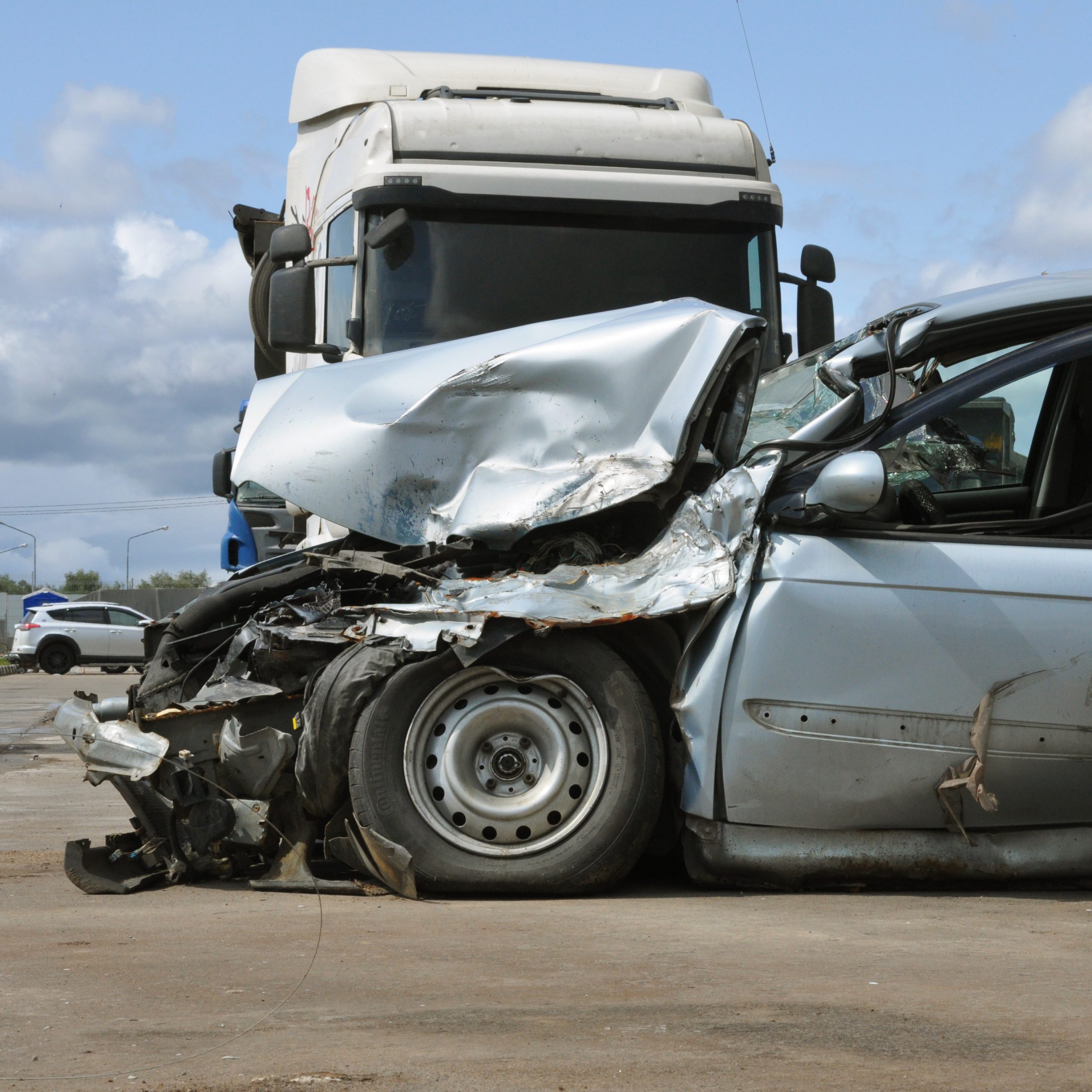Trucks and Blindspot Accidents

Introduction
Trucks and blindspot accidents are common. They occur when a truck driver is unable to see a car because of a blindspot. This article addresses trucks and blindspot accidents and why truck drivers are typically at fault in these types of accidents.
Trucks and Blindspots
Every big truck, especially large big rigs, have blind spots. A blindspot, also called “No Zones” , is an area around the truck where a car cannot be seen. Car drivers falsely assume that truck drivers can see everywhere because they sit higher off the ground.
Trucks have four blind spots, as follows:
- Directly to the rear. The blind spot extends about 30 feet.
- Directly in front of the cab or tractor. The blind spot extends about 20 feet in front of the tractor.
- Driver’s side next to the side mirror, and
- Passenger side next to the side mirror.
Blindspots are recognized by the Federal Motor Carrier Safety Administration, which is the largest federal agency that governs trucking companies and drivers. Blind spots make it difficult for a truck driver to see cars, often resulting in collisions.
Every truck driver is trained to monitor blind spots at all times, and to carefully check blind spots before moving into another lane. Drivers who obtain a commercial driver’s license must demonstrate proficiency in operating a big rig, including being aware of blind spots. Truck drivers are supposed to keep tabs on cars around the truck and be aware that those who disappear may be in a blind spot.
Vehicle Code
The two most common trucks and blindspot accidents that involve large trucks include lane change accidents and rear-end accidents. California Vehicle Code, Section 22107 governs lane changes and states that a driver can only change lanes when safe and only after signaling. A blind spot does not excuse a truck driver from following this Vehicle Code.
California Vehicle Code, Section 21703 provides that a driver of a motor vehicle shall not follow another vehicle more closely than is reasonable and prudent. Rear-end collisions typically happen because a motorist follows too close.
Common Reasons Why Truckers Cause Accident
There are several reasons why truck drivers cause accidents. The most typical reasons include:
- They are not properly trained;
- They are not qualified to drive a particular truck;
- They don’t have appropriate mirrors, or the mirrors are not properly adjusted;
- They are inattentive and are not fully aware of their surroundings;
- They fail to check blind spots before making a maneuver;
- They drive when tired. There are two reasons for fatigue. One, irregular and long hours. Second, age and poor health among truck drivers;
- They drive while under the influence;
- They don’t have proper technology to better see blind spots.
All of these factors explain why truck drivers fail to keep track of cars.
Examples of Trucks and Blindspot Accidents
John is a truck driver driving an 18- wheel tractor and trailer. He is driving on the freeway and preoccupied with eating his lunch. He does not check his mirrors as often as he should. As he is driving, Sally, in a Prius, is driving in the lane next to the truck. She is going faster and approaches the truck. She begins to pass the truck. When she reaches the passenger side mirror of the truck, John changes lanes and strikes the Prius, injuring Sally. In this example of trucks and blindspot accidents, John is at fault for making an unsafe lane change in violation of the Vehicle Code. The fact she was in the truck’s blind spot does not excuse John’s conduct. He was required to change lanes only when it was safe to do so. He failed in this regard because he was inattentive, and will be held liable for the accident.
Fred is driving his big rig on the street. As he is looking at his cell phone, a small Ford Escort, driven by Bob, moves in front of him. He doesn’t see Bob change lanes. Bob remains in front of the truck, less than 20 feet away, and is in the truck’s blind spot. Bob is forced to make a sudden stop because of a dog that darts out into the roadway. Fred also sees the dog and applies his brakes, thinking he has plenty of room to stop. He strikes the back of the Escort, injuring Bob. Fred is negligent for striking the back of the Escort. The fact that Bob was in the truck’s blind spot is no defense.
Summary
At MCIS lawyers, our attorneys used to defend truck drivers and their companies in trucks and blindspot accidents. We know the inside story of how reckless the truck drivers can be. If you have questions about your rights after a truck accident, schedule a free consultation. No pressure, just advice.
